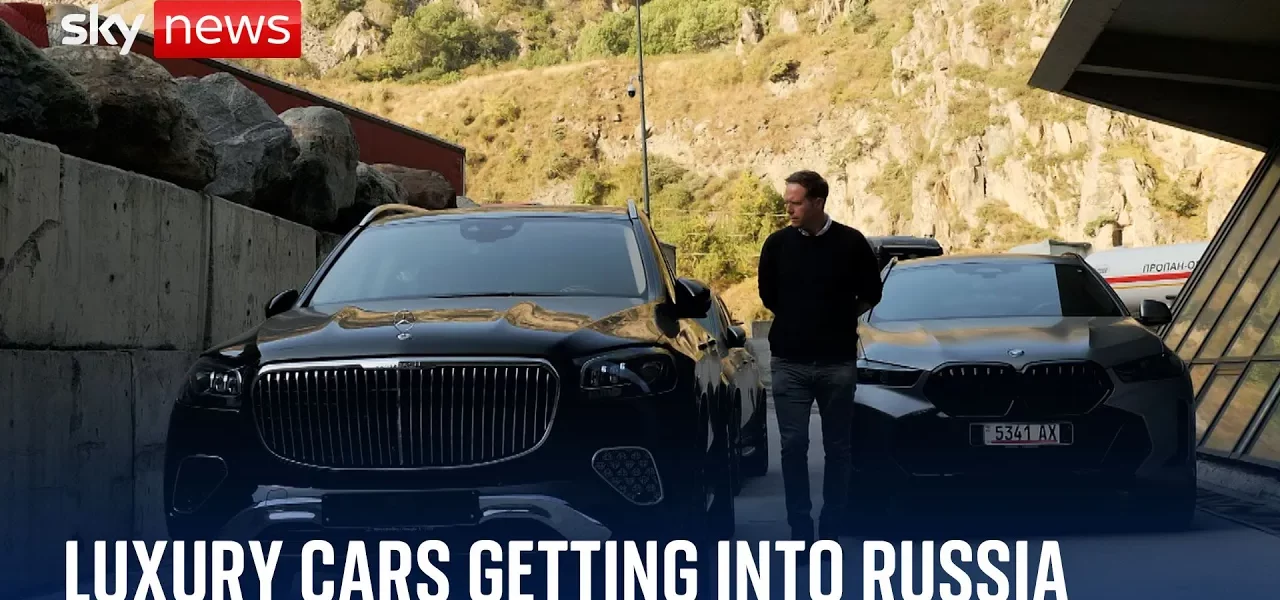How Sanctioned Luxury Cars are Still Reaching Russia

In this detailed exploration, we investigate the complex pathways through which luxury cars, despite sanctions, are still finding their way into Russia via the Caucasus mountain range. This article sheds light on the ongoing illicit trade and the implications of these findings.
Introduction to the Caucasus and Its Geopolitical Importance
The Caucasus mountain range, stretching across Georgia, serves as a significant geographical and historical border between Europe and Asia. Renowned for its breathtaking peaks that soar higher than those in the Alps, this region plays a crucial role in various geopolitical dynamics. One of the primary routes into Russia traverses these mountains, providing not just a scenic pathway, but a vital link for trade and transport. This article delves into how this route has become a crucial artery for the illicit flow of luxury goods, particularly high-end automobiles, into Russia, despite existing sanctions.
The Flow of Luxury Cars into Russia
Recent investigations have revealed alarming trends regarding the export of luxury cars to Russia, particularly in light of the sanctions imposed after the invasion of Ukraine. The data indicates that while sanctioned goods, including luxury vehicles, are reported to be exported to neighboring Caucasus states like Azerbaijan and Georgia, many of these vehicles ultimately end up in the Russian market.
Tracking the Data
In February alone, reports indicated over £26 million worth of luxury car exports. The key question arises: how are these vehicles circumventing the sanctions? The investigation highlights several key points:
- Luxury vehicles are reportedly transported to the Caucasus for private orders.
- There is a significant disconnection between the reported export data and the actual destination of these vehicles.
- Photographic evidence has surfaced of high-value cars waiting at border checkpoints.
The Role of the Caucasus as a Transit Hub
As the investigation unfolds, the role of Georgia and the Caucasus as a transit hub for luxury cars becomes increasingly clear. This section examines the logistics involved in transporting these vehicles across the border into Russia.
Border Checkpoints and Transport Logistics
Upon arriving at the L checkpoint in Georgia, a stark reality presents itself—trucks laden with luxury vehicles are lined up, waiting to cross into Russia. Observations include:
- High-end vehicles parked in secluded areas, often without registration plates.
- Drivers engaged in transporting vehicles, many of whom are reluctant to discuss their operations.
- Evidence of well-organized networks that facilitate the movement of these cars across borders.
Identifying the Key Players in the Trade
The flow of luxury cars into Russia is not a random occurrence but a well-coordinated operation involving various parties. This section explores who is involved in facilitating this trade.
Individual Brokers and Logistics Companies
Many Russian brokers have reportedly relocated to Georgia to manage this lucrative trade. They provide essential services and guidance on circumventing customs data. Key points include:
- Russian citizens often claim they are transporting vehicles to nearby countries, thereby masking their true destination.
- Individual drivers are frequently hired to drive cars across the border, allowing them to avoid scrutiny from customs.
- Vehicles are sometimes re-registered in Armenia, further complicating tracking efforts.
Implications of the Ongoing Trade
The continued influx of luxury cars into Russia poses significant questions regarding the effectiveness of sanctions. This section assesses the broader implications of circumventing these economic measures.
Sanctions Effectiveness
The G7 nations have touted their sanctions regime as one of the toughest in history. However, the findings suggest a different narrative:
- Despite sanctions, luxury goods continue to flow into Russia without significant barriers.
- The trade of weapons and military equipment is also reportedly happening through similar channels.
- Many companies, including Jaguar Land Rover, claim they have taken steps to stop sales to Russia, yet the ongoing trade indicates a failure to fully enforce these measures.
Conclusion: The Reality of Sanctions and the Need for Action
The investigation into the flow of luxury cars into Russia underscores a critical gap in the enforcement of sanctions. Despite the measures in place, the automotive trade, particularly in high-end luxury vehicles, continues to thrive. This raises essential questions about the integrity and effectiveness of sanctions as a tool for geopolitical strategy.
As the evidence presented highlights the ongoing trade in sanctioned goods, it is imperative for governments and regulatory bodies to reassess and strengthen their approaches to monitoring and enforcement. The reality is clear: despite what is proclaimed, the sanctions regime is being undermined in plain sight. It is crucial for stakeholders to take action to close these loopholes and ensure that economic sanctions serve their intended purpose.
For further exploration of related topics, consider reading our articles on the effectiveness of economic sanctions and the trade of luxury goods in conflict zones.
“`




